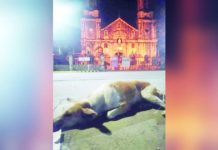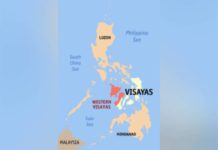
ILOILO – The dengue death toll in this province rose to six as cases ballooned to 123, data from the Iloilo Provincial Health Office (IPHO) showed.
The cases were recorded from Jan. 1 to April 9. They were four percent higher than the 118 cases with zero deaths reported in the same period in 2021.
A mosquito-borne viral infection, dengue causes a severe flu-like illness that could sometimes be fatal. Its carriers are day-biting mosquitoes (Aedes albpictus and Aedes aegypti) that live and breed and clean, stagnant water.
According to Dr. Maria Socorro Colmenares-Quiñon, provincial health officer, the rise in dengue cases could be due to the rains in recent weeks; dengue mosquitoes found suitable places to breed.
The 123 dengue cases with six deaths were recorded in the following: San Joaquin (20), Guimbal (17 cases with two deaths), Miag-ao (nine cases with one death), Estancia (eight), Tigbauan (seven), Sara (five), Concepcion (five), Oton (five), Balasan (five), Pototan (four), Carles (four), San Dionisio (four), Igbaras (three cases with one death), Santa Barbara (three), Lambunao (three), Batad (two), Leganes (two cases with one death), Tubungan (two), Passi City (two cases with one death), Ajuy (two), and one case each in San Enrique, Mina, Dingle, Calinog, Zarraga, Pavia, New Lucena, Cabatuan, Banate, Dumangas, and Leon.
On the other hand, no dengue cases were recorded in Alimodian, San Rafael, Badiangan, Janiuay, Dueñas, Barotac Viejo, San Miguel, Barotac Nuevo, Anilao, Bingawan, Lemery, and Maasin.
“Sa pagtapos sang ulan, ekspektar nga mas madamo ang ilitlogan sang lamok, meaning mas daku tsansa nga damo maglatnanay sang dengue,” said Quiñon.
Iloilo province is currently under Dengue Alert Level 5. According to Gov. Arthur Defensor Jr., this should prompt everyone to prepare for this year’s three-year cyclical surge in dengue cases.
“We are starting our preparation against dengue because 2022 is the third year of the three-year cycle in dengue outbreaks,” said Defensor.
Here’s the annual dengue cases in the province since 2013 (note the surge every third year):
* 2013 – 6,564 cases
* 2014 – 2,289 cases
* 2015 – 330 cases
* 2016 – 9,392 cases
* 2017 – 1,340 cases
* 2018 – 2,316 cases
* 2019 – 22,169 cases
* 2020 – 707 cases
* 2021 – 486 cases
The IPHO is campaigning for the “5S” strategy to combat dengue — “search and destroy” the breeding places of mosquitoes; “self-protection” from mosquito bites; “seek early consultation” when signs and symptoms of dengue occur; “say yes to fogging” as a last resort when there is a looming outbreak; and * social distancing.
According to the World Health Organization, individuals should suspect dengue when a high fever (40 degrees centigrade) is accompanied by two of the following symptoms: severe headache, pain behind the eyes, nausea / vomiting, swollen glands, muscle and joint pains, and rashes.
For severe dengue, the warning signs to look out for are: severe abdominal pain, persistent vomiting, rapid breathing, bleeding gums, blood in vomit, fatigue, and restlessness./PN



